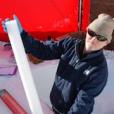
Elastic Recoil Detection Analysis
Elastic Recoil Detection Analysis (ERDA) is used principally as a method for measuring hydrogen in thin layers, and in the near-surface region of materials.

Showing 881 - 900 of 1566 results

Elastic Recoil Detection Analysis (ERDA) is used principally as a method for measuring hydrogen in thin layers, and in the near-surface region of materials.
Researchers based at Monash University and the Swedish Museum of Natural History have pioneered the use of nuclear imaging techniques at ANSTO’s Centre for Neutron Scattering to resolve long-standing problems in plant evolutionary history linked to wildfires.
ANSTO participation in ARC on Intelligent Robotic Systems for Real-time Asset Management has potential benefit in the management of infrastructure and assets
Neutron association award to energy materials researcher Prof Vanessa Peterson.
Three ANSTO scientists are contributing to two recently awarded Australian Research Council Discovery Project grants.
ANSTO radiocarbon facilities and scientists are featured in a new IMAX documentary film released in the United States.
ANSTO has secured a $1.62 million Medical Research Future Fund (MRFF) grant under the Australian Brain Cancer Mission’s 2024 Brain Cancer Discovery and Translation program
Development of new techniques makes it possible to date Australian Aboriginal rock art.
Close to 3000 members of the public decided to have a look at a building that is shaped like a doughnut, is as big as a football field and creates light more powerful than the sun when the Australian Synchrotron held its bi-annual Open Day held on Sunday, 16 October.


The growth and incorporation of graphene into semiconductor device architectures has been limited by challenges related to the quality, reproducibility, and high process temperatures required to grow it on suitable substrates.
Research highlights how biodistribution of a toxic substance essential to understand all exposure risks.
Monash University researchers have used advanced techniques at ANSTO to investigate the production of new, elongated polymer nanocapsules with a high payload of drug nanocrystals to potentially increase drug targetability, and also decrease dosage frequency and side effects.
Researchers from ANSTO and NASA’s Jet Propulsion Laboratory have uncovered the likely mineral composition of Saturn’s largest moon, Titan, revealing a world of exotic organic crystals unlike any found on Earth.
Given the importance of water in Australia, surprisingly, there is relatively little information about the past variability of rainfall on this continent. Although there is a good annual record of the past 100 years in Australia, there is nothing much before that period and no known cave deposit records exist for New South Wales.